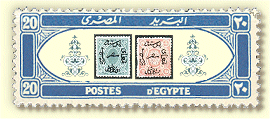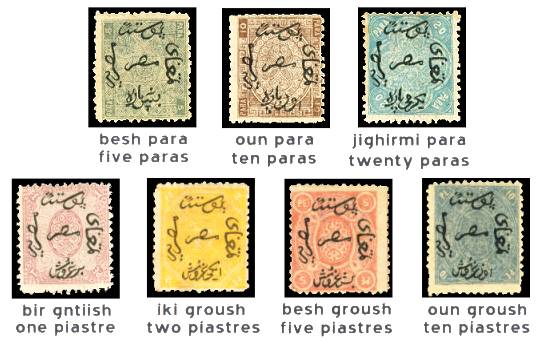

The First Issue was put on sale on January 1, 1866, and sales continued until July 1867, when the Second Issue superseded it. The production of this issue, which took place in Italy (Fratelli Pellas), was the first experience of the firm with printing stamps; the result was remarkably complex. Six of the seven values were lithographed. The value overprints, which were an integral part of the stamps, were lithographed on five values, typographed on two (1 piastre and 2 piastres). The paper for six of the values had an asymmetric watermark, and was printed more or less indiscriminately on one side or the other. This gave rise to four different watermark orientations. The 1 piastre was unwatermarked. Perforation was also peculiar. Whereas most of each sheet was perforated 12˝, two vertical and two horizontal lines of perforation gauged 13. This gave rise to seven different combinations of the two gauges (furthermore, the 13-gauge machine was also used to correct an occasional missed line of perforation). Finally, the process used to build the lithographic stones gave rise to ten transfer types and two different orientations of the background design. Although the designs were superficially symmetrical, being hand-drawn they actually differed from top to bottom in small features. This produced tęte-bęche varieties. The postal rates were constant, 1 piastre per 10 grams for letters, 1 piastre for registration, 10 paras for printed matter, and 5 paras for newspapers. However, the rates to Upper Egypt followed a different pattern, for the mail was handled by a separate entity, the so-called Post of Mohammed Ali, a previously existing service developed for administrative mail. The rates were based on the weight in dirhems and the distance; examples are very rare. 
|
|
|